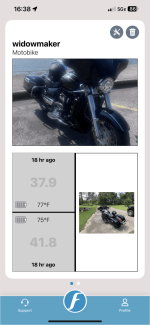Bunny Burrell
Supercharged
Afternoon folks, I just had an interesting conversation with an American Gentleman with reference to motorcycle tyre pressures.
A bloke on a FB forum I follow was asking what tyre pressures would you advise for his bike, an HD Tour Glide I believe. This lad said 40 front and 32 Rear! I questioned him with, surely you would mean 32/36 front and 42+ in the rear. He came back with, well like I’d insulated his intelligence, no it must be 40 front 32 rear no arguments.
Is it me, or do you run HDs with those tyre pressures?
A bloke on a FB forum I follow was asking what tyre pressures would you advise for his bike, an HD Tour Glide I believe. This lad said 40 front and 32 Rear! I questioned him with, surely you would mean 32/36 front and 42+ in the rear. He came back with, well like I’d insulated his intelligence, no it must be 40 front 32 rear no arguments.
Is it me, or do you run HDs with those tyre pressures?

